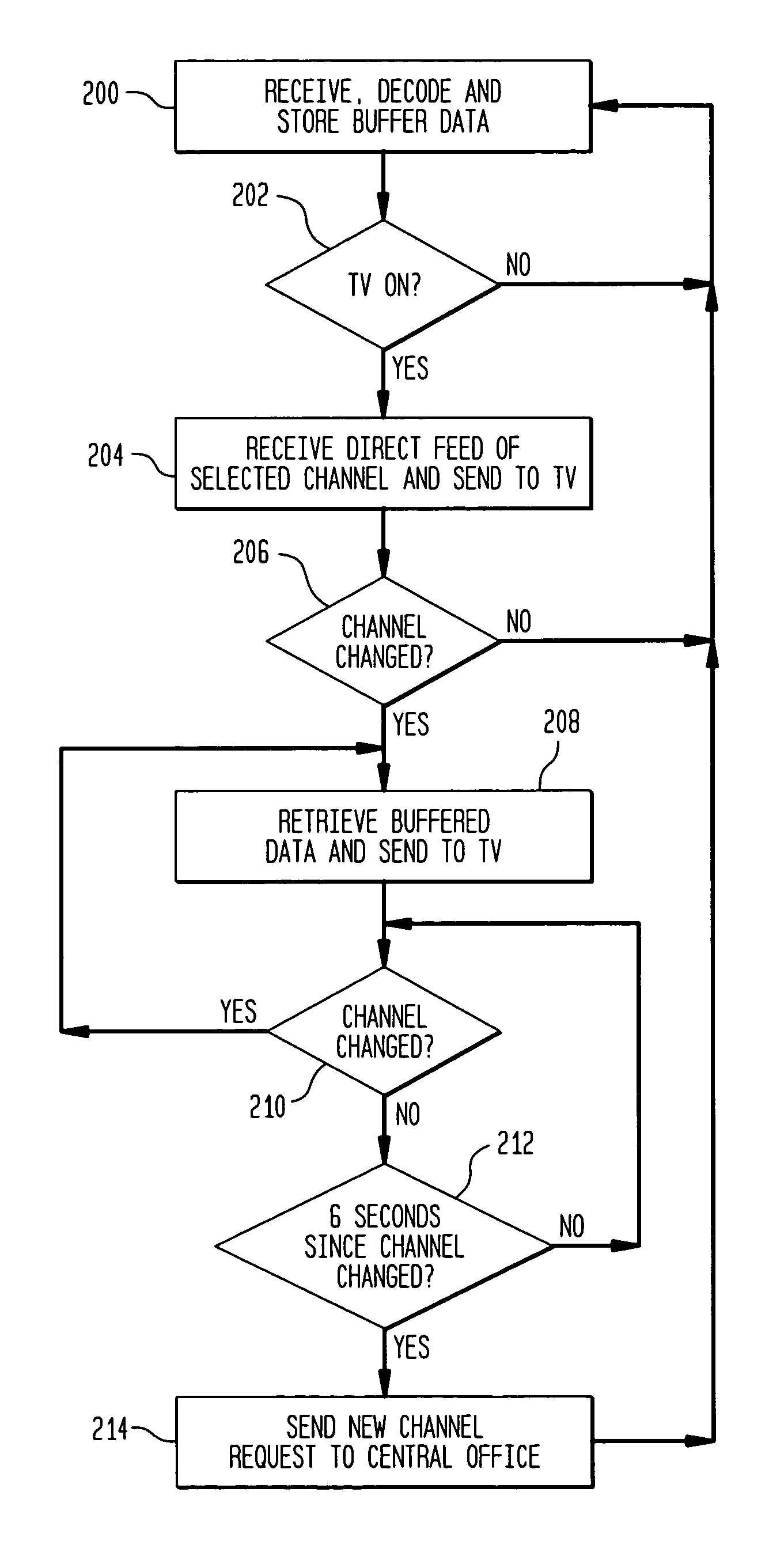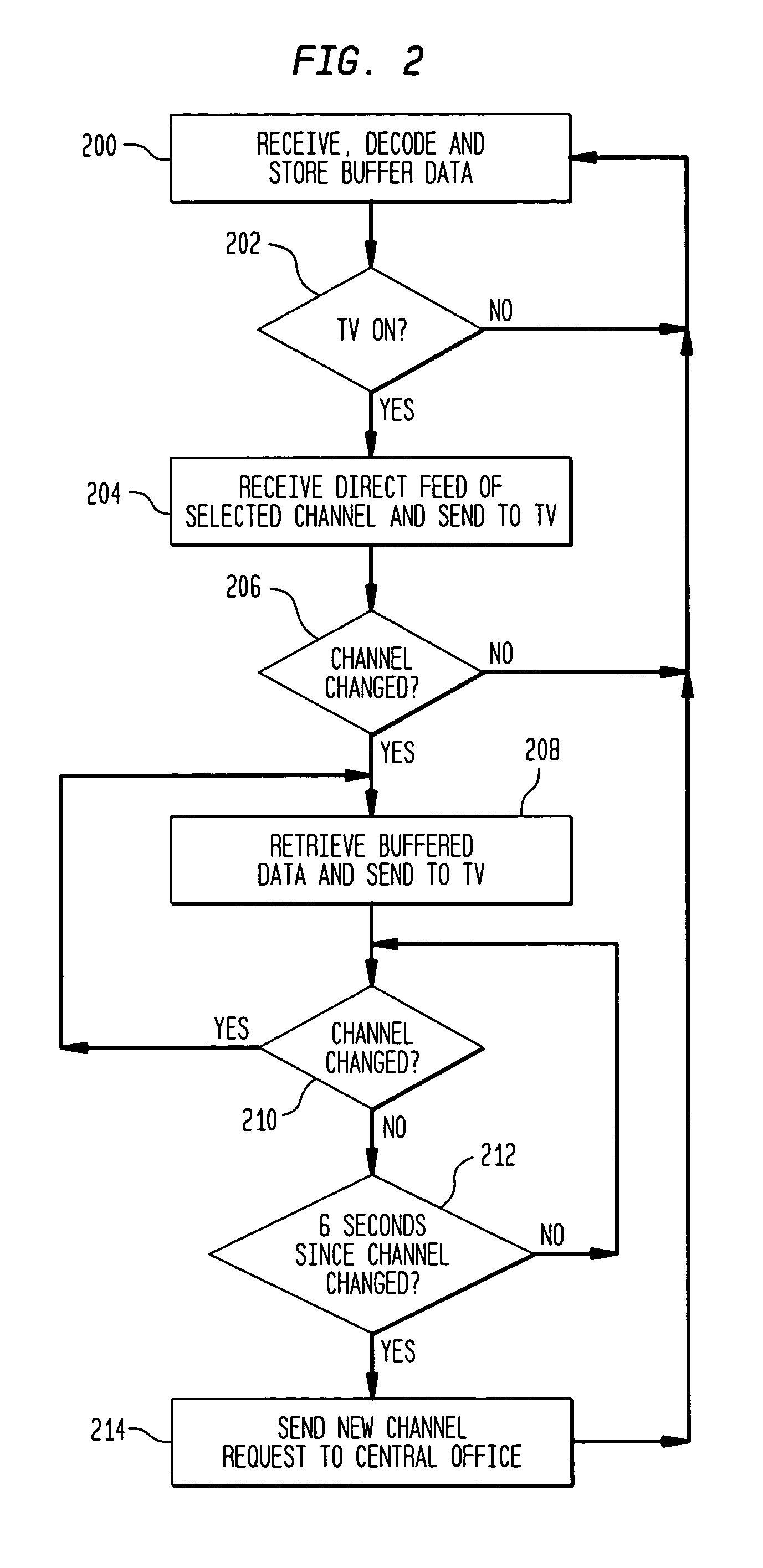Transmission method and apparatus for optical fiber television network
a technology of optical fiber and television network, applied in the field of fiber optic television network, can solve the problems of inability to bring optical fiber directly into the home, limited bandwidth of cable television network, and inability to meet the needs of the home, so as to achieve the effect of facilitating buffering and facilitating transmission
- Summary
- Abstract
- Description
- Claims
- Application Information
AI Technical Summary
Benefits of technology
Problems solved by technology
Method used
Image
Examples
Embodiment Construction
[0021]FIG. 1 is a block diagram of a fiber optic communications network for providing television, telephone, and Internet services to a household. Because the invention can be adequately illustrated and described in connection with the communication between a single household and a central service office, FIG. 1 illustrates only a single household node 12 in the network. However, it should be understood that a typical communications network comprises a central office 14 and a plurality of household nodes 12. Further, the present invention primarily relates to the provision of multiple channels of television service over an optical fiber having less available bandwidth than is needed to transmit the entire multiple channel television information. Accordingly, for ease of illustration and explanation, the connection between the central office and the home is shown in the illustration as a single optical fiber. However, it will be understood by those skilled in the art that the fiber o...
PUM
 Login to View More
Login to View More Abstract
Description
Claims
Application Information
 Login to View More
Login to View More - R&D
- Intellectual Property
- Life Sciences
- Materials
- Tech Scout
- Unparalleled Data Quality
- Higher Quality Content
- 60% Fewer Hallucinations
Browse by: Latest US Patents, China's latest patents, Technical Efficacy Thesaurus, Application Domain, Technology Topic, Popular Technical Reports.
© 2025 PatSnap. All rights reserved.Legal|Privacy policy|Modern Slavery Act Transparency Statement|Sitemap|About US| Contact US: help@patsnap.com



